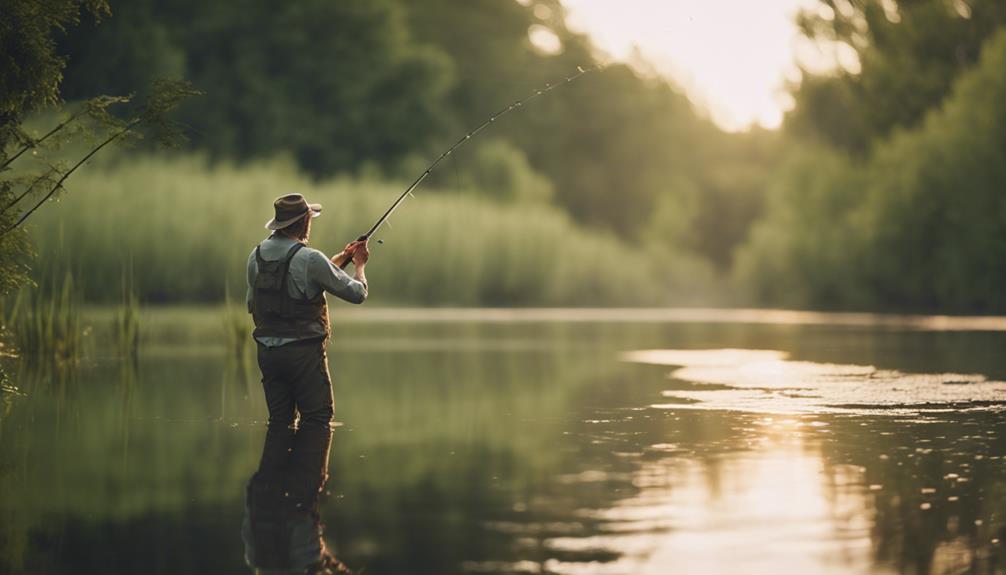Fishing is a beloved pastime for millions of people across the globe, providing not only a chance to connect with nature but also an opportunity to enjoy some quality time with family and friends. However, before you cast your line, it’s essential to understand what you need to get your fishing license. This guide will break down the requirements, processes, and tips for obtaining your fishing license, ensuring you’re well-prepared for your next fishing adventure.
Understanding the Importance of a Fishing License
Before diving into the specifics of obtaining a fishing license, it’s crucial to understand why it’s necessary. A fishing license is a legal requirement in many regions and serves multiple purposes. Firstly, it helps regulate fish populations by ensuring that fishing practices are sustainable. Secondly, the fees collected from fishing licenses often go towards conservation efforts, habitat restoration, and fish stocking programs. Lastly, having a fishing license demonstrates that you respect the laws and regulations set forth by local wildlife authorities, which is vital for preserving our natural resources.
Researching Local Fishing Regulations
The requirements for obtaining a fishing license can vary significantly depending on your location. Different states and countries have unique regulations, so it’s essential to research local fishing laws before applying for your license. Most state wildlife agencies have websites that provide detailed information about fishing licenses, including age requirements, residency rules, and specific fishing seasons. Additionally, some areas may require special licenses for certain types of fishing, such as saltwater fishing or ice fishing. Familiarizing yourself with these regulations will help ensure that you adhere to the law and avoid potential fines.
Gathering Required Information and Documents
To get your fishing license, you’ll need to gather specific information and documents. Typically, this includes:
1. Identification: A government-issued ID, such as a driver’s license or passport, is usually required to verify your identity and age.
2. Social Security Number: Some states may require your Social Security number for identification purposes.
3. Residency Proof: If you’re applying for a resident fishing license, you may need to provide proof of residency, such as a utility bill or lease agreement.
4. Previous Fishing Licenses: If you have held a fishing license in the past, it may be beneficial to have that information on hand.
Having these documents ready can streamline the application process and ensure you meet all requirements.
Choosing the Right Type of Fishing License
When applying for your fishing license, you’ll encounter various options, and it’s crucial to choose the right one for your needs. Most jurisdictions offer several types of fishing licenses, including:
– Resident licenses: Typically available to individuals who live in the state or region.
– Non-resident licenses: For individuals who are visiting from out of state or country.
– Short-term licenses: Ideal for tourists or infrequent fishers, these licenses are valid for a limited period.
– Specialty licenses: These may include options for specific fishing methods (like fly fishing or ice fishing) or species (such as trout or salmon).
Understanding these options will help you select the best license for your fishing plans, ensuring compliance with local regulations.
Where to Apply for Your Fishing License
Once you’ve gathered the necessary documents and chosen the right type of fishing license, it’s time to apply. There are several ways to obtain your fishing license:
1. Online: Many state wildlife agencies offer online applications for fishing licenses. This is often the quickest and most convenient method, allowing you to complete the process from the comfort of your home.
2. In-person: You can also visit local government offices, sporting goods stores, or bait shops that are authorized to issue fishing licenses. This option allows you to ask questions and receive immediate assistance.
3. By mail: Some states may allow you to apply for a fishing license via mail. This method usually requires you to download and print an application form, fill it out, and send it along with payment.
Be sure to check the specific application methods available in your area for a smooth process.
Understanding Fees and Payment Options
The cost of a fishing license can vary based on factors such as your location, the type of license you choose, and your age. For example, many states offer discounted rates for seniors, children, and military members. Additionally, short-term licenses are often less expensive than annual permits.
When applying for your fishing license, you’ll typically have several payment options, including credit/debit cards, checks, or cash (for in-person applications). Be sure to check the payment methods accepted by your chosen application method to avoid any complications.
Staying Compliant with Fishing Regulations
After obtaining your fishing license, it’s essential to stay informed about local fishing regulations to ensure compliance. This includes understanding catch limits, seasonal restrictions, and any specific regulations related to certain bodies of water. Regularly reviewing local fishing regulations will help you avoid potential fines and contribute to sustainable fishing practices.
Additionally, consider participating in local conservation efforts or educational programs offered by wildlife agencies. These initiatives can enhance your fishing experience while promoting responsible fishing and environmental stewardship.
Conclusion: Your Next Steps Toward a Successful Fishing Experience
Now that you know what you need to get your fishing license, you’re well on your way to enjoying this wonderful outdoor activity. Remember to research local regulations, gather the necessary documents, and choose the right type of license for your needs. By staying informed and compliant, you’ll not only enhance your fishing experience but also contribute to the preservation of aquatic ecosystems. So grab your gear, head to your favorite fishing spot, and enjoy the great outdoors—just don’t forget your fishing license!
By understanding the requirements and processes for obtaining a fishing license, you’ll be better prepared to take advantage of all the joys that fishing has to offer. Happy angling!
